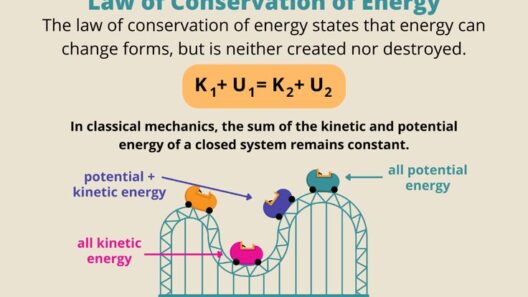In an era marked by rapidly increasing energy costs and a profound need for sustainability, the imperative question emerges: How can we save and conserve energy at home and office alike? As individuals, families, and organizations navigate the intricacies of modern life, the pressing challenge of energy conservation invites thoughtful engagement. The stakes are high, and the time to act is now.
Energy conservation entails a myriad of strategies that not only mitigate costs but also contribute to the cherished goal of environmental stewardship. When we ponder the factors contributing to energy consumption, several key areas surface: lighting, heating and cooling, appliances, and behavior modifications. Understanding how these factors interact can transform both domestic and workplace energy profiles.
1. Optimizing Lighting
The advent of LED technology has revolutionized the way we illuminate our spaces. Switching from incandescent bulbs to LEDs can reduce energy consumption significantly—by up to 80%. Beyond mere bulb replacement, strategic deployment of natural light should be prioritized. Consider how often you illuminate a room during daylight hours. The jovial dance of sunlight traversing through windows can often be harnessed to minimize reliance on artificial lighting. For those who enjoy the ambiance of lamps and fixtures, employing dimmers and motion sensors can also enhance efficiency.
2. Mastering Heating and Cooling
Heating, ventilation, and air conditioning (HVAC) systems command a notable proportion of energy usage in residential and commercial structures. Regular maintenance and tuning of these systems—including replacing filters and inspecting ducts—can optimize their efficiency. Adjusting thermostats for seasonal changes can also yield remarkable savings. A minor adjustment of just a few degrees can lead to exponential energy conservation. For the inventive, utilizing ceiling fans to redistribute air can modulate temperature without unnecessary strain on HVAC systems.
3. Upgrading Appliances
When it comes to appliances, we often overlook the energy consumption of devices that occupy our daily lives. Choosing Energy Star-rated appliances is not merely a choice but a commitment to sustainability. These devices are manufactured to consume less energy than their conventional counterparts. Additionally, strategic usage of appliances—such as running dishwashers and washing machines during off-peak hours—can capitalize on reduced energy tariffs. Encourage all members of the household or work environment to adopt these practices, creating a culture of proactive energy conservation.
4. Embracing Smart Technology
The integration of smart technology into our lives presents both opportunity and responsibility. Smart thermostats, programmable light switches, and even intelligent appliances allow users to monitor and modify energy usage remotely. This technological shift not only simplifies management but also provides valuable insights into consumption patterns. Gamifying energy conservation by setting challenges—such as reducing usage by a certain percentage or tracking energy-saving accomplishments—can foster healthy competition and camaraderie among family members or colleagues.
5. Cultivating Conscious Behavior
Ultimately, the human element plays a pivotal role in energy conservation. Cultivating awareness around daily habits can lead to substantial savings. Simple practices such as turning off lights in unoccupied rooms, unplugging chargers, and reducing the duration of showers can cumulatively conserve a significant amount of energy. Moreover, engaging in collective initiatives—be it a household challenge to reduce waste or a workplace competition to lower energy bills—can galvanize participation and amplify positive change. Might it be time to rally your peers or family for an energy-saving challenge?
6. Insulation and Weatherproofing
A well-insulated structure is essential for maintaining energy efficiency. Weatherproofing your home or office safeguards against drafts that can lead to excessive heating or cooling loss. Sealing windows and doors with caulk, adding weather stripping, and ensuring proper insulation in attics, basements, and crawl spaces can significantly influence energy usage. The investment in insulation pays dividends in reduced energy bills and enhanced comfort levels throughout the year.
7. Renewable Energy Options
As individuals increasingly seek ways to contribute to a sustainable future, exploring renewable energy options becomes a feasible consideration. Solar panels, for example, can transform properties into energy generators, significantly reducing dependence on traditional energy sources. While the initial financial outlay may seem daunting, the long-term benefits—both financial and environmental—are compounding. Furthermore, many governments and municipalities provide incentives for homeowners and businesses to adopt solar solutions, making the transition more palatable.
8. Educating and Advocating
Awareness is a precursor to action. By educating oneself and others about the impacts of energy consumption, one can amplify the call for responsible choices. Sharing actionable insights within your community—perhaps through workshops, forums, or online platforms—serves not only as a conversation starter but as a critical movement toward collective action. Advocating for sustainability initiatives, whether in the workplace or community, can shift the paradigm toward energy conservation as a cultural norm.
In conclusion, as the planet grapples with the repercussions of climate change, every effort counts towards a collective resolution. By embracing these strategies, families and office teams alike can forge a path toward energy conservation that benefits not just their wallets, but the environment as a whole. So, why not pose the challenge among your peers: “How much energy can we collectively save this month?” Inviting collaboration not only fosters community spirit but accelerates the journey towards sustainability. It’s time to take action.








